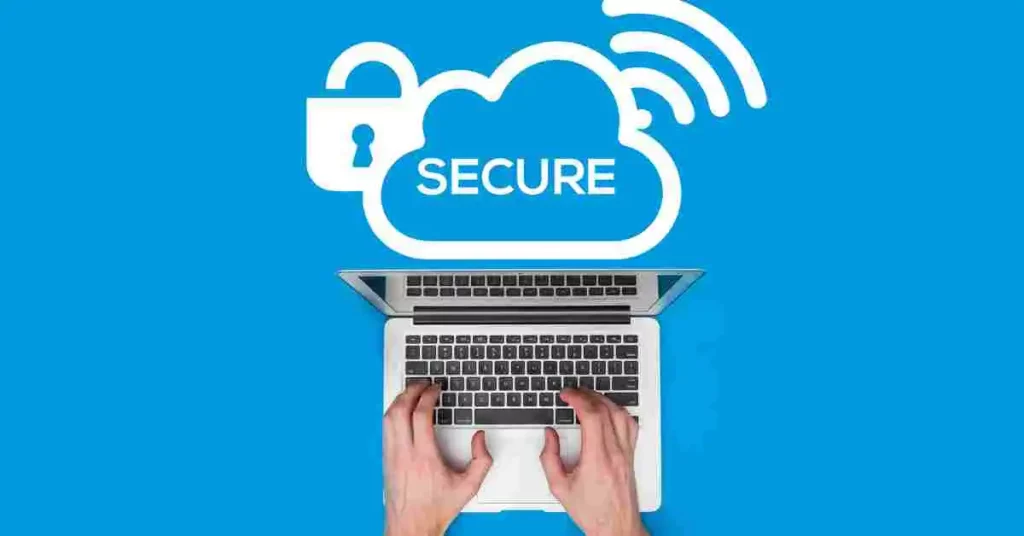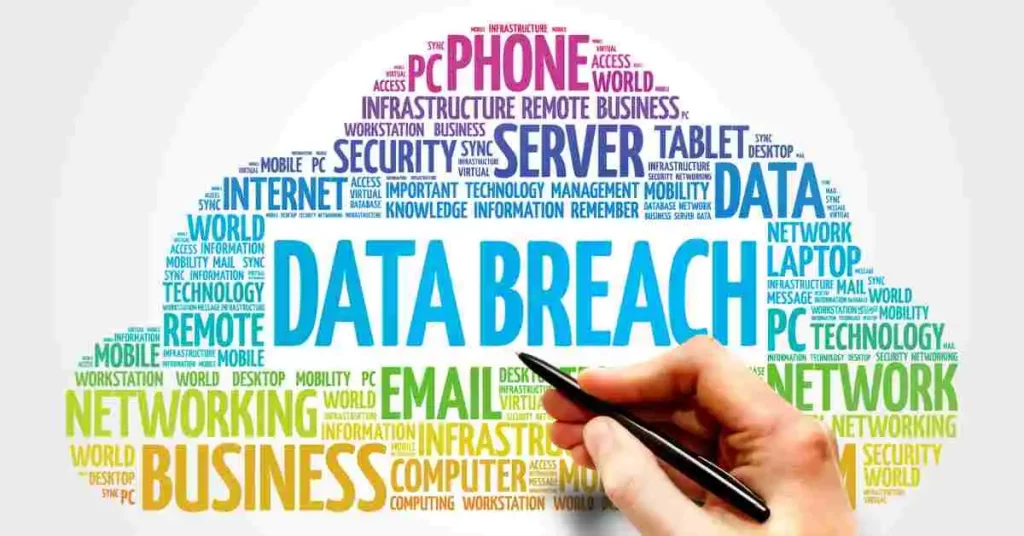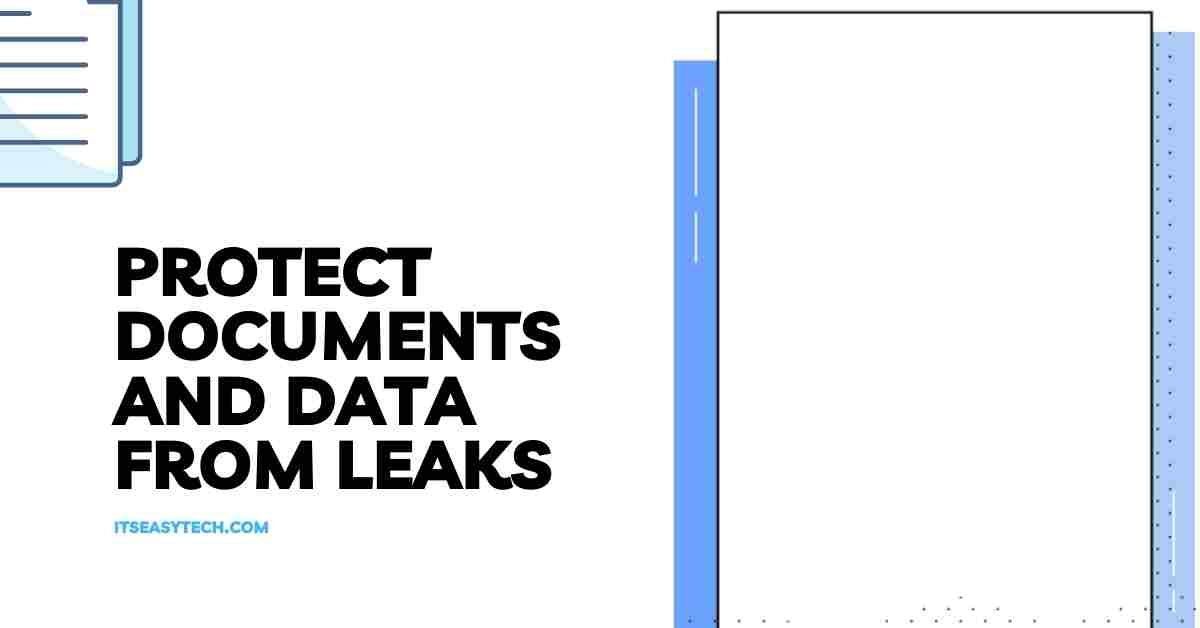Data security breaches across organizations are always in the news. Although these hacks could range in extent and size, it is evident that businesses impacted by cybercriminals suffer grave consequences.
Data and document leaks can lead to significant financial and reputational harm for organizations. To protect against this, organizations must have a secure system in place to guard against the unauthorized release of sensitive information.
What are the potential risks of data and document leaks in points
The impact of data and document leaks can be devastating to businesses as well as individuals. In the age of digital documents and the ever-growing amount of personal and confidential data stored on computers and the internet, data and document leaks are becoming increasingly common.
Here are some of the potential risks of data and document leaks:
1. Loss of Confidentiality: The most glaring risk of a data leak is the potential for confidential information to be made public. This could mean anything from a company’s intellectual property being exposed to personal records like social security numbers, addresses, and bank accounts being revealed. This can be particularly damaging for businesses and individuals, as it could potentially lead to identity theft, financial losses, and other forms of malicious activity.
2. Loss of Reputation: When a company’s confidential information is exposed, it can cause serious damage to their reputation. People may no longer trust the company and its products, and it can lead to a loss of customers and a decrease in revenue.
3. Legal Liability: If a data leak occurs, it can lead to legal liability for the company responsible. Depending on the severity of the breach, a company may face fines, penalties, and other legal consequences.
4. Security Issues: Data leaks can also lead to security issues, as confidential information can be used to access other accounts and systems. This can lead to further breaches and a decrease in security.
5. Loss of Trust: If a company is found to have leaked confidential information, customers, partners, and other stakeholders may no longer trust the company. This can lead to a loss of customers, partners, and other stakeholders.
Data and document leaks pose a serious risk to both individuals and businesses, and it is essential for companies to take steps to protect themselves from potential breaches. Companies should invest in security solutions and regularly review their security policies and procedures to ensure that confidential information is properly protected. By taking these steps, companies can minimize the risks of data and document leaks and ensure that their confidential information is properly protected.
Measures to Protect Documents & Data from Leaks
As the digital world continues to grow and sensitive documents and data proliferate, it has become increasingly imperative to protect these documents and data. In order to protect electronic records and data from leaks and unauthorized access, organizations must take the necessary measures to ensure their confidentiality and security.
We will cover a variety of ways to prevent leaks and unauthorized access to documents and data in this blog.
1. Impact training and education to all work staff on data security
Lay down the need to stay away from risky online behavior such as downloading applications, data files from unknown sources or videos from suspicious websites. When employees realize that hackers are looking to steal data in the place they work, their attitude towards data security could change in positive ways and ensure organizational information remains safe.
2. Know the kind of information you have and classify it
An organization will be unable to secure its confidential data if it does not know where it exists, how it is stored, by whom it is used, when it is backed up, and how to dispose of it. Ensure you are in the loop of all the things regarding your confidential data. In some cases, not all information is equally sensitive, which is why it is essential to classify data based on its level of significance.

3. Offer only permitted users access to data
Every organization must lay down policies governing which individual can gain access to classified information, specific systems and data. Further, guidelines and procedures must be implemented, while policies and technical controls must be enforced to create a protocol. Only authorized people must receive access to the information they need to perform their jobs efficiently, but ensure that the access to the data is revoked immediately once the task is done.
4. Implement stringent and proactive data security tools, such as digital rights management [DRM]
Every organization stores its classified information or confidential data into documents and PDF files. Implementing digital rights management can be a crucial step in safeguarding data security. And because it is easy to forward PDF files and documents easily, PDF DRM is vital since it can prevent data from being copied, printed, downloaded or transmitted.
Ensuring your company’s digital rights for your PDF documents can make it impossible for people to take the protected content and pass it on without your knowledge. Having PDF security such as digital rights management in place can be a significant step in safeguarding or locking down your digital assets, thus making you in control.
With the ability to restrict the copying, printing, editing and giving you full access control, DRM also provides features such as revocation of access and document expiry.
5. Consider moving your confidential data to a secure cloud provider
If your organization has an adequate data security team, you could rely on their expertise in safeguarding your information. However, in the absence of one, a reputed cloud provider with enhanced data security can ensure that your information is secured against various risks. Make sure encryption and multiple authentication methods are used.
6. Deploy remote wiping
All portable electronic devices that are used in the organization, primarily where classified data is accessed and stored, must have remote wipe capabilities enabled to ensure that the information does not fall into the wrong hands.
7. All employees must have individual credentials
Every individual must have credentials. Employees who are looking to gain access to confidential data or wanting to access their system that stores classified information must have their unique login credentials so they can be identified.
8. Implement strong multi factor authentication
While most organizations continue to use passwords, in the absence of the right data security policy and technologies such as DRM, such organizations are at risk of having their passwords be the only line of defense on their classified data.
Hence, it is crucial to implement the right protocol and ensure that proper policies are enforced. Specific systems that store classified data must have a robust form of multifactor authentication if passwords are in use.
9. Encrypt all confidential information
Regardless of where sensitive data is stored, lies or is transmitted, it is crucial to ensure it is encrypted.
10. Implement a backup policy
Some organizations do not realize the significance of ensuring that their data is backed up frequently. In most cases, many realize the danger of their mistake once it is too late. For instance, if malware enters one of your organizational networks, it could corrupt all your data and systems. Hence, maintain off-site backups as well as on-site backups to your classified data.
11. Comply with industry regulations and standards
Several companies have learned the hard way, that sometimes policies alone do not ensure that their employees can be relied upon to safeguard classified information. This is where the right data security technology such as PDF DRM comes into use.
Complying with information security regulations and standards such as GDPR can provide organizations with a baseline on how to prepare in securing their data. Besides, DRM offers functional and robust data security controls that comply with industry standards and regulations.
And while there are no sure-shot assurances when it comes to data security, following the steps mentioned above and implementing DRM can dramatically enhance your possibilities of preventing cybercriminals hacking your company’s sensitive data.
How to Monitor and Respond Quickly to Potential Data Leaks
Data breaches can be disastrous for businesses of all sizes, and although the focus is often on preventing data leaks, it is just as important to monitor them and respond quickly in the event of a breach. This can help minimize the damage and ensure that customers and other stakeholders are not negatively affected.

In this blog post, we will look at how to monitor and respond quickly to potential data leaks.
1. Invest in Data Loss Prevention (DLP) Software
Data Loss Prevention (DLP) software helps to identify, monitor and prevent unauthorized data movement. This software can also help business owners detect any potential data leakage, allowing them to take immediate action before any damage is done.
2. Monitor Network Activity
A business’s network activity should be monitored regularly in order to detect any suspicious behavior, such as a data breach. Many businesses invest in Network Activity Monitoring (NAM) software that can detect any unauthorized users or activities.
3. Monitor Web Access
Businesses should also monitor all web traffic that is coming in and out of the network in order to detect any potential data breaches. This can be done by monitoring web access logs and keeping an eye out for any suspicious activity.
4. Scan for Malware
Malware can be used to steal data, so it is important to regularly scan for any malicious software on the network. This can be done using antivirus & malware removal software as well as other security measures such as firewalls and intrusion detection systems.
5. Respond Quickly
Once a data breach has been identified, it is important to respond quickly and take the necessary steps to mitigate the damage. This could include notifying affected customers and other stakeholders, as well as taking steps to investigate the breach and prevent future data losses.
By following these steps, businesses can monitor and respond quickly to potential data leaks and minimize the damage. Investing in the right software, monitoring network activity, scanning for malware and responding quickly are all key to protecting sensitive information in the event of a breach.
Conclusion
By taking the necessary steps to protect documents and data from leaks, businesses can ensure the safety of their confidential information.
These steps include implementing strong security policies and procedures, using data encryption technologies, and regularly monitoring and auditing system access.
Additionally, businesses should ensure that only authorized personnel have access to confidential information and that they are aware of the risks associated with data leaks. By taking these proactive steps, businesses can help to protect their valuable data and documents from potential data breaches.













